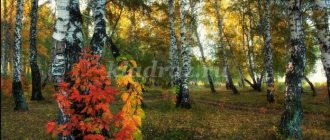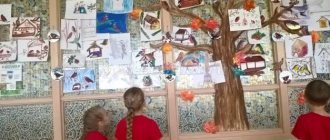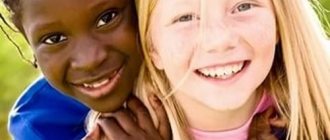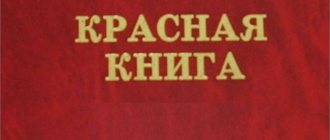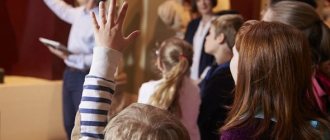MAGAZINE Preschooler.RF
Summary of organized educational activities on cognitive development “Excursion to the Museum”Prepared by teacher Karzhevich Natalya Valerievna MBOU Sosnovoborsk secondary school of Zeysky district GDO village. Sosnovy Bor, Amur region, Zeya district, village. Sosnovy Bor 2021
Program content:
Goal: To introduce children to the life, way of life and creativity of the Russian people.
Tasks.
- Expand children's understanding of museums.
- Expand children's vocabulary with the concepts of excursion, guide, exhibit; artisans.
- Promote the development of children's cognitive interest.
- Develop children's curiosity.
- Foster patriotic feelings.
- Foster a caring attitude towards the cultural heritage of the people.
Material:
- Items used in everyday life in Rus': cast iron, grip, iron, spoons, kerosene lamp, spinning wheel, jars.
- Products made from birch bark: tueski, toys, bast shoes, jewelry.
- Folk art products: Khokhloma dishes, matryoshka dolls, dishes decorated with Gzhel painting.
Materials for children to carry out work:
- narrow satin ribbons 30-40 cm long for each child,
- oversleeves,
- headbands,
- birch bark mugs with holes,
- devices for threading ribbons.
Preliminary work:
- Conversations on the topic “How our ancestors lived” ,
- “What objects did our grandparents use?”
- Reading K.D. Ushinsky “How a shirt grew in a field.
Progress of OOD
Educator. Guys, what is the name of the country we live in?
Children. Russia.
Educator. That's right, we live in Russia. This is our Motherland. Do you love
your homeland? (Children's answers)
What does it mean to love your Motherland?
Children. To love your family, your home, to take care and protect everything that we have
surrounds, know the history of your people, your region.
Educator. How great it would be to look into the past and see how
Our ancestors lived on our land many years ago. How is it possible
learn about all this?
Children. You can view and read books, encyclopedias,
movies, ask grandparents about their lives.
Educator. But there is also a place where antiques, paintings, and various antique products are stored - this place is called a museum. A museum is a place where various ancient objects are collected, studied, stored and displayed.
There are a lot of museums, the most famous of which is the Hermitage, which is located in the city of St. Petersburg. (Slide show) There are a lot of exhibits in the Hermitage, one of the most famous is the Peacock .
There is another famous museum. It is located in the city of Moscow - this is the Moscow Kremlin Museum.
Almost every city has a local history museum. It contains items that tell about the history and culture of this city, locality, region.
This is the local history museum in our regional center - the city of Blagoveshchensk. (Slide.)
Objects in a museum are called exhibits.
Museums can have many exhibits and then they are shown in large rooms - halls. Each room can have its own name. The museum staff, the guides, can tell us about each item. You and I will also go to the museum. Of course, it’s not as big as the Hermitage, but I think you’ll find it interesting.
Physical education minute
We are interested in the museum, What we will see is unknown, We will all study, We will remember everything.
Along the halls, all the way forward, the guide will lead us, show us the exhibits, and tell us everything in detail.
Today I will be your tour guide.
Excursion.
Educator. Presented to your attention are items that were used in everyday life a long time ago in those days when there was no electricity.
This is a kerosene lamp, for what purpose was it used?
Children. For home lighting.
Educator. This is an iron in which coals were placed and heated. This is a grip that was used to remove cast iron pots from the furnace.
Educator. What do you think the cast iron was used for?
Children. Cast iron was used for cooking.
Educator. This is a spinning wheel (teacher demonstration) with its help animal wool or flax fiber was turned into threads, finely spinning the fiber.
Educator. Pay attention to this exhibit. What is this type of painting called?
Children. Khokhloma.
Educator. Right. Where was this type of painting used?
Children. Khokhloma painting was used for painting dishes.
Physical education minute
Khokhloma, yes Khokhloma (hands on the belt, body turns right - left)
Our miracle is wonderful! (raise your arms up, lower them down through your sides)
We draw Khokhloma (hands in front of the chest, one on top of the other) of unprecedented beauty! (raise your arms up, lower them down through your sides).
Let's draw grass (children imitate drawing grass with their hands)
Sunny paint (raise your arms up, lower your arms down through your sides)
Rowan berries (hands in front of the chest, one on top of the other)
Scarlet paint (raise your arms up, lower your arms down through your sides)
Khokhloma, yes Khokhloma (hands on the belt, body turns right - left)
What a wonderful miracle! (raise your arms up, lower them down through your sides).
Please look here. These items are made from
birch bark Do you know what birch bark is?
Children. This is birch bark.
Educator. Birch bark was used to make toys, dishes (display), jewelry, and bast shoes were woven from it. The dishes made from it were light, unbreakable, and moisture-resistant - bread in birch bark boxes lasted longer than in wooden ones.
And in well-made vessels it was possible to store not only bulk products, but even drinks! Birch bark was used as paper and people wrote on it. They also made cups, ladles, scoops (birch bark), salt shakers, various boxes and other containers. And they even made boats.
Craftsmen were engaged in the production of various products. Potters sculpted pots, blacksmiths forged iron products, tanners tanned leather, weavers wove linen. Craftsmen studied their craft for many years in order to master it masterfully and make products of high quality, beautiful, strong and durable.
Do you want to become artisans? There is a craft workshop in our museum, but in order to become one you need to perform a ritual.
To become a craftsman they dress
There is a lot to know about armbands
Don't yawn and don't be lazy, shake your finger
It’s very good to learn how to depict how they write
And then you will find something to do
You will do it boldly.
We have birch bark mugs, but they are still ordinary and not attractive in any way. We will turn them into beautiful birch bark decorations.
(Children decorate the mugs with ribbon, insert the ribbon into the holes made with the seam facing forward.)
Reflection:
If you liked our museum and learned something new,
interesting and you have dealt with everything, take a birch tree with green leaves, and if you had difficulties, then take a birch tree with yellow leaves.
Used Books.
1. Raising children in the traditions of folk culture. Auto. -composition
V. P. Vataman. Volgograd: Teacher - 2008-181p.
2. We introduce children to Russian folk art. Auto. -composition L.S. Kuprina, T.A. Budarina, O.A. Markeeva, O.N. Korepanova. SPb: And “Childhood – press” 2001-400s.
3. Kartushina M.Yu. scenario of recreational activities with children 4-5 years old. -M.: Sphere shopping center 2004-128p.
4. Kartushina M.Yu. scenario of recreational activities with children 5-6 years old. -M.: Sphere shopping center 2004-128p.
5. Kachanova I.A., Lyalina L.A. Traditional games in kindergarten. — M.: Sphere shopping center, 2011-112с
6. “From birth to school” is an approximate basic general education program for preschool education. under. ed. NOT. Veraksy, T.S. Komarova, M. A. Vasilyeva. -3rd ed. M.: Mosaic-synthesis. 2015- 368 p.
7. Panteleeva N.G. Folk holidays in kindergarten. - M.: Mosaic - synthesis 2014-72s.
| Next > |
"Beauty is in the eye of the beholder"
A museum is a place where pieces of art and culture in the broad sense of the word are collected. Today there are museums that display more than just classical paintings or statues. The variety of museums is enormous: some tell about art that is several centuries old, others about modern art. Some about history or science. However, they have one function: human development in the mental plane.
Everything a person looks at is processed by his brain and turns into an associative connection. Associations make people completely different from each other; they are the key to human individuality. The larger and better the associative connections, the more developed the brain. That is, the main human organ can be developed by reading or looking at something that is difficult to understand. The brain is like a muscle: without training it becomes unusable. With the load on the brain that art creates, the human neural network improves physiologically.
Since school, most people have learned a certain way of thinking, generally accepted algorithms, and everything that goes beyond them causes various difficulties in perception. The older a person is, the more difficulties there are. Art does not lend itself to any algorithm, so it acts as a “trainer” for the brain. During a simple examination of a museum exhibit, a gigantic amount of work is accomplished. Difficult, but necessary for everyone.
The most active formation of associative connections occurs in childhood. What a child comes into contact with determines his future life. Individuality, mental potential, views - all this is formed under the influence of the surrounding world. The peculiarity is that the child’s brain knows a small number of algorithms, so it takes everything as a basis.
In short, the quality of what a baby sees, hears and feels is equal to the quality of his brain. “High quality” items are found in museums. There you won’t have to figure out what is useful and what is not. Getting to know any museum exhibits will only bring benefits. On excursions to museums, a high-quality foundation is formed, thanks to which the child in the future will be able to perceive complex, incomprehensible things.
The exhibits will be perceived by the child in their own way, perhaps not in the same way as is customary for adults. Most likely, in the future he will not be able to talk as a professional, for example, about the classical paintings that he saw in childhood. They serve another function: not to surprise others with their “eruditeness,” but to instill in a child a beautiful, stable, individual inner world.
Based on all of the above, the answer to the question is simple, maybe even banal: taking children to museums is necessary for development. Trips to the museum develop a child’s mind, just like sports activities develop the body. However, we must remember that balance is necessary everywhere. You cannot force a child to constantly be in contact with art in a museum: this process should be pleasant, and the little visitor should be interested. Otherwise, instead of benefit, you can get the opposite effect.
Collective visits to museums are useful leisure time for children, parents and educators
Natalia Pavlova
Collective visits to museums are useful leisure time for children, parents and educators
Acquaintance with the museum should begin as early as possible, namely from preschool age. It is no coincidence that aesthetic education is considered as the development of the ability to understand, perceive , feel the beauty in the world around us (N. A. Vetlugina)
.
The word " museum " translated from Greek means a temple in which the muses live - the temple of the muses. Modern science defines a museum as an institution conducting research, scientific and educational activities by storing, systematizing, studying and popularizing monuments of material and spiritual culture (open lesson RF/articles/578638/)
.
First of all, visiting museums gives a preschooler the opportunity to join the world of universal human values and develop cognitive and research skills.
The museum is a special educational environment; it is a wonderful helper for those mothers and fathers who want to broaden their child’s horizons. After all, family vacations are an important way to strengthen the family.
Visiting museums will help the family broaden their horizons, teach them to understand and appreciate art, allow them to join museum culture , learn the rules of behavior, the ability to understand the figurative language of objects, gives symbolic access to the space of another culture, and the opportunity for personal experience.
In preschool age, the family has the strongest influence on the child. That is why children are introduced to the museum in close contact with their parents .
Most parents are characterized by a conscious attitude towards the museum as a specific educational institution . However, there are parents who believe that it is too early for preschoolers to attend such institutions : “They are small and will not understand anything, why waste time”
.
Also, some dads and moms simply don’t come up with the idea of such an excursion, but a group visit to the museum is always welcome, it forces you to leave some business and go with the group .
Based on these aspects, we decided to create a family club “Kaleidoscope of Museums ”
.
We would like to share our work experience and confirm the fact that collective visits to museums are useful leisure time for children , parents and educators .
We began our work in the club with a survey on the topic of collective visits to museums and the creation of a club . A survey of parents showed that 25% of parents were against participation in the club and only 60% supported the creation of the club. The first meeting was attended by 8 people - parents who always support the initiatives of the teachers . We decided that this was enough to create a club and began work. At the meeting, the club participants adopted:
1. The motto of the club is “We step into a beautiful world to be in the constellation of beauty”
.
2. We chose an asset that consisted of like-minded people: the chairman, his assistant, the photographer. 3. We introduced the topics of the club’s meetings for the year and suggested the names of museums that we plan to visit this year . Parents and children were active and offered their options. A proposal was received - to collectively visit the museum of bread , water, zoological, the museum of Izhora factories , and the planetarium. Based on the interests of the children and the recommendations of the parents , a technological map was adopted with the goals and objectives of the club for the year and the topics of the meetings.
Our first visit took place to the Izhora Plants
We set ourselves the following tasks: to introduce
children to the museum , to help children adapt to the museum space museum culture skills .
The tasks of working with children were the following:
Introduce the history of the city of Kolpino, legends about the origin of the name of the city.
Promote the development of children's interests , curiosity and cognitive motivation: master the means and methods of obtaining information.
Cultivate a respectful attitude and a sense of belonging to your family, to the community of children and adults .
Develop the ability to share impressions with your friends.
Tasks of working with parents :
Develop parents’ to analyze the child’s activities and behavior. To study the features of pedagogical awareness and the ability of parents to participate in the educational process of the group through participation in the work of the family club. Provide parents about methods and means of solving their child’s problems within the framework of a family club.
For us, teachers, the first excursion was of a diagnostic nature. It was important to find out:
How will children behave in a different environment?
How long can they hold their attention?
children most ?
Will children ask questions to the tour guide?
Since the excursion lasted for an hour, we noticed that some children began to get tired, distracted, and the guide had to switch the children’s attention to something new and interesting. Most of the children were interested in the museum exhibits , they were tired, but the excursion was very well thought out, the guide kept the children's . It was felt that the children were interested in the guide's story about history, and especially the story about the war. When we returned to the group, the children recalled what they liked most, and we recorded their stories on video. After “There is a town on the Izhora River” was launched
, the purpose of which is:
captivate by the history of the emergence and development of the city
introduce the streets, the river and the bridges spanning it.
As part of this project, children and their parents got acquainted with the city, and were given route sheets to help parents accompany their child on excursions. Children made sketches and completed tasks, for example: “Find information about the city’s bridges on the Internet.”
, find out who the street is named after, for example,
“Vera Slutskaya”
,
“Izhora Battalion”
,
“Anisimov”
, etc. Tasks were also given: write a story about some object in the city and tell your friends.
For example, write a story about the “House of Creativity”
,
“Spoonbill”
, about the monument to Menshikov, etc.
We believe that the museum contributed to the fascination with the history of the emergence of our city, the infrastructure of the city, the history of the names of streets, bridges, not only for children , but also for their parents , since some information about the city was new parents All this work develops children’s , teaches them to find the necessary information, fosters a respectful attitude towards their small homeland , teaches them to communicate and the ability to share impressions with their friends. For parents , this work plays a positive role in keeping parents and children together . They see their child, his achievements, shortcomings, difficulties, thereby fostering independence in children . The project lasted for a year. And we noticed that children and parents approached the tasks that were offered to them with interest. Based on this, we decided to continue the project activities. Topics were selected based on the interests of the children , and also took into account the club’s work plan.
Our next project was a short-term project “Where did the bread come from?”
During the classes, children were told about cereals, about bread, about the path that grain collected in the fields takes to get the bread to the table.
They showed the presentation “From ear to bun”
, looked at cereals, compared rye and wheat, oats and rye, looked at the painting
“In the Bakery”
and made up a story based on it.
We tried to knead the dough ourselves and bake cookies. They taught children to respect the hard work of a grain grower and baker, to treat bread with care, because, as they used to say in Russia, “Bread is the head of everything”
! All these activities contributed to familiarity with the cultivation of cereals in modern conditions, when work was made easier by machines.
How was bread grown before? To help answer this question, we went to the Bread Museum .
We have set the following goals for working with children:
Introduce the tools that peasants used to grow bread, and the hard labor of barge haulers who pulled a barge with bread along the Volga.
children develop an understanding of the importance of bread as a staple human food product.
cognitive activity and coherent speech in children
To cultivate a caring attitude towards bread, respect and gratitude for the people who grow and bake bread.
Develop the ability to share your impressions after visiting the museum .
Tasks of working with parents :
Try to be a tour guide for your child, show the exhibits yourself, while completing the tasks on the accompanying sheet.
Observe your child, how he can listen carefully, is he inquisitive?
It was important for us to understand:
Will all parents be able to patiently guide their child through the museum and help complete the tasks on the accompanying sheet?
Pay attention to children's behavior and interaction between parents and children .
museum appears in a somewhat unusual form; it suggests close contact between a child and his parent . The guide introduced the children to the hard work of barge haulers, who dragged a barge with bread along the Volga, and looked at the painting “Barge Haulers on the Volga”
, Surikova.
Then the parents, each with their child, received an accompanying leaflet (booklet)
and, while completing tasks, introduced
the children to the exhibits of the museum . The children saw a Russian oven in which bread was baked. We got acquainted with the tools that were needed to grow bread at different times of the year. They completed tasks, for example: make a word from the letters: T, B, E, C, E, A, R and you will find out what the Brownie bast shoes were woven from. Choose every third letter R, Sh, D, U, S, R, F, E, O, I, Z, V, P, G, A and you will find out what is harvested from wood. Parents and children completed many more interesting tasks; they were useful for both children and their parents . We recommend visiting the Bread Museum !
So, having visited the bread museum , we were once again convinced that collective visits to museums are useful leisure time for children , parents and educators :
children expanded their horizons and practiced their reasoning skills;
children saw tools for growing bread;
expanded their vocabulary with words denoting kitchen utensils: millstone, flail, broom, sieve, grip, nochva. And also due to words denoting confectionery products: shangi, pretzel, kulebyaka.
practiced your ability to communicate with a guide;
spent the weekend with my parents .
The parents watched again:
the behavior of your child and the behavior of other children ,
saw how the child communicates with friends,
realized how curious the child is,
We felt how difficult it was to keep children’s throughout the entire excursion.
When visiting this museum, we saw how mothers interact with their children and children with each other. Here it was necessary to show patience, the ability to reason, find answers independently, the ability to read, and solve puzzles. We watched as mothers and children looked at the exhibits, looked for answers to the booklet’s questions and realized that all children and parents are not equally patient, inquisitive, attentive and, finally, hardworking. Some parents did not try to understand the purpose of visiting the museum and , after attending a master class on braiding, quickly left.
After visiting the museum , we gathered for a club meeting to summarize the knowledge gained on the excursion, as well as discuss what we succeeded in and what we need to work on. parents were asked to think and answer the following questions:
1. What did you like most?
2. What do you remember?
3. What did you learn?
4. What new did you learn?
5. Help the children draw their favorite exhibit.
We asked all mothers to bake something together with their child and photograph the whole process. Then we gathered in the kindergarten group for a tea party, where the children presented confectionery products, told how they helped their mother, and then exchanged recipes for the cakes they liked. While the children drank tea, the parents shared their impressions of the trip to the museum . It was concluded that parents themselves should show interest and participation in the excursion so that their children can set a positive example. After the club meeting, the group prepared a confectionery book in which collages of confectionery making were placed.
The goal of modern society is to educate a “person of culture”
, development of the personality of a child capable of free creativity and culturally determined interaction with the environment.
It is during this period that it is important to create conditions for children to develop interest in objects of historical and artistic value, thereby laying the foundations for a continuous process of familiarization with culture and art. the museum environment is of particular importance .
According to the research of A. Verbenets, the term “interest in
the museum ” (what we are working on in the club)
in relation to solving a problem in preschool age implies:
• Interest in a museum object (its characteristics, properties)
and through it the development of cultural values, cognitive information, historical and social connections;
• Interest in the museum as a certain cognitive object (its external characteristics, essence and functions, structure, rules of organization, history of the emergence of the museum as a phenomenon and the creation of a specific museum ;
• Interest in visiting this structure as a new environment, a source of cognitive information and emotional and aesthetic impressions.
The uniqueness of interest for preschool age lies in the fact that, originating in the form of emotional responsiveness to everything new (curiosity), it gradually turns into inquisitiveness, and then the need to be convinced of the truth. (L. M. Manevtsova, P. G. Sirbiladze, A. I. Sorokina)
.
Within the framework of the problem of developing interest in visiting a museum, the manifestation of cognitive and aesthetic interest is especially significant. Cognitive interests are characterized by a focus on learning new content.
Each time we analyzed the work of the club, the tasks for children , parents and teachers took into account the changed conditions, taking into account the specifics of the museum we were going to visit .
Next on the club’s work plan was a visit to the zoological museum ; it was interconnected with the project “Diversity of the Animal World”
. The main goal of the project was not only to introduce animals of different climatic zones, but to give ideas about the ability of animals to adapt to different living conditions.
The group produced Tundra
,
“Antarctica”
,
“Desert”
, presentations were shown, they played board games, looked at illustrations, drew, wrote stories about animals, and read a lot to children about the amazing abilities of animals.
The children gained a lot of knowledge while working in this project, but you can see animals either at the zoo or at the zoological museum .
Before visiting the zoological museum, the children were asked the following problematic questions:
Continue to develop communication skills with the guide, develop the ability to correctly ask questions during the tour.
Develop independence skills.
Develop communication skills: the ability to behave in a public place, treat adults and peers with respect.
Continue to develop the ability to examine exhibits.
Parents are the main assistants to teachers in organizing excursions, capturing the progress of the excursion on video or taking photographs.
The parents faced the following tasks:
To encourage parents an active desire to be involved in the teacher’s work with their children when visiting the museum .
To develop in parents the ability to independently organize meaningful communication with children in leisure activities related to visiting museums .
children's research skills : find the necessary information using different sources: fiction, encyclopedias, reference books, the Internet, communication with adults.
After the excursion, creative tasks were given:
— We gave the children an idea about the Red Book and, together with the children and parents, collected information about the animals that are listed in the Red Book.
— guess the animal based on a verbal description of its appearance and answer the question: In what climate zone does it live?
- recreate the appearance of an animal based on some part of it (for example: “Funny squiggles”
— complete the squiggle into a meaningful image or plot);
- recognize in vague graphic forms (ink spots, scribbles)
various familiar animals.
“Whose shadow is this?”
- turn a spot into a pattern.
"Nonexistent Animal"
- draw and name a non-existent animal, talk about it.
"Life story"
- come up with a story on behalf of the drawn animal.
During the year we also managed to visit the Planetarium.
and in
"
Water Museum " .
From visiting each museum, children had positive impressions of communicating with friends; children gained new knowledge, the ability to behave in a public place, and communicate with new people.
Of course, we brought a lot of photographs and brochures as souvenirs. At the end of the school year, we gathered for the final meeting of the club, which was held in the form of KVN based on the results of visiting excursions .
from parents about the work of the club.
Summing up the year, we noticed that children and parents became more open, began to respond more often, and treated our work with understanding. Thanks to the excursions, the children became more inquisitive, learned to communicate with adults and peers, asked questions to the guide, the children’s horizons , their ideas about the world around them were enriched, and they became familiar with the culture of their people. visits to excursions contributed to the development of coherent speech. Many children learned to talk coherently: Where were you? What did you see?
For parents, visiting museums with their child is also of great importance: parents and children have become closer to each other, another topic for joint conversation appears, children are busy with useful things .
Thus, we are convinced that collective visits to museums are useful leisure time not only for children , but also for parents and educators . Therefore, we intend to continue working in the “Kaleidoscope of Museums ”
with newly admitted children.
Objectives of the school excursion
Each organized excursion for schoolchildren has its own goals and objectives. The excursion event is carried out in accordance with the planned plan. Let us turn to the analysis of the goals that teachers set before conducting excursions.
In the footsteps of the ancient Slavs
"Visiting Chukovsky"
Interactive "Red Arrow"
"Sports Moscow"
Depending on the focus of the event and taking into account the age of the group participants, the goals of the school excursion can be reduced to:
- To motivate students to actively participate in practical activities;
- Towards the spiritual and moral education of students by introducing them to the norms of society and awareness of responsibility for preserving nature;
- To expand the general horizons of pupils;
- To the formation of practical skills and abilities by performing certain actions during the event;
- To motivate schoolchildren to participate in research activities, demonstrate creative and scientific potential;
- To the development of basic competencies necessary for building interpersonal relationships, instilling norms of behavior in society, etc.
"Moscow Schoolboy"
Interactive “On the way to Olympus”
"For the first time in first class"
"Initiation as a Pioneer"
The general goals of the school excursion were given above; now let’s turn to their types. So, there are the following types of goals:
- Gaining additional knowledge about culture, science, etc.;
- Fostering patriotism, respect and love for the homeland;
- Labor education and demonstration of the city’s achievements in the overall economy of the country;
- Environmental education and acquaintance with the nature of the native land.
New Year with Cheburashka and Gena
"Wide Maslenitsa"
Interactive "Jungle School"
"Echoes of a Past War"
Based on the goals of the school excursion, their achievement is carried out by solving certain problems. For example, for the purpose of patriotic education and introducing students to the nature and culture of their native land, the tasks are reduced to:
- To develop creative abilities and expand the horizons of students;
- To develop schoolchildren’s interest in studying the culture and history of their native land;
- To get to know the appearance of the city in different time periods to form a stable opinion about its uniqueness and originality.
Quest “The Secret of the Forest Glade”
A journey through Chukovsky's fairy tales
Maslenitsa “Stolen Sun”
Master class “Young pastry chef”
In accordance with the chosen goals and assigned tasks, the teacher prepares an excursion plan. Achieving goals and solving problems occurs through the resources and opportunities provided within the framework of the event.
